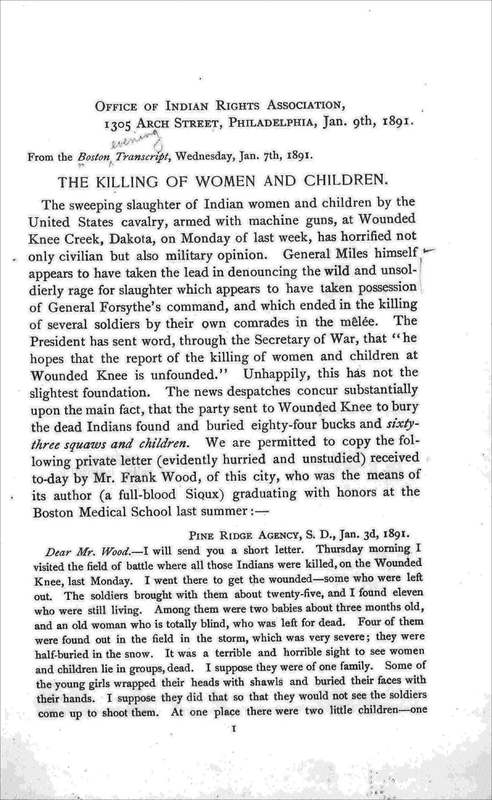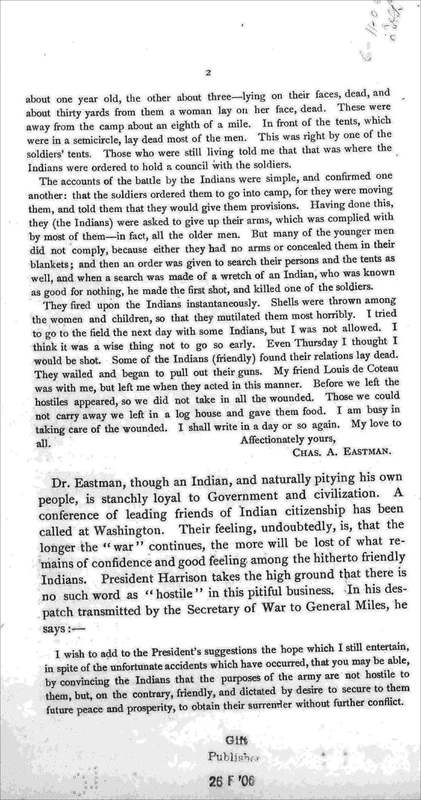Aftermath
The Massacre of Wounded Knee marked one of the turning points for the United States and Indians in the 1800's, alluding to the end of the ‘Indian Wars’ as well as marking the end of the Ghost Dance. The views of the general public on this matter was divided. Some cavalry men received honors for 'defeating' a cult while others saw the massacre for what it was, horrifying.
Source: Killing of Women and Children. Indian Rights Association. (above)
“The sweeping slaughter of Indian women and children by the United States cavalry, armed with machine guns… has horrified not only civilian but also military opinion.”
The violence instigated by the United States government was done in an attempt to squash all organization and participation of a Pan Indian movement, the Ghost Dance. Through the arrest and murder of important community leaders including Sitting Bull and through the Wounded Knee Massacre - the Ghost Dance came to a near complete halt from state initiated violence and led to an era of assimilation and destruction of Native culture.




